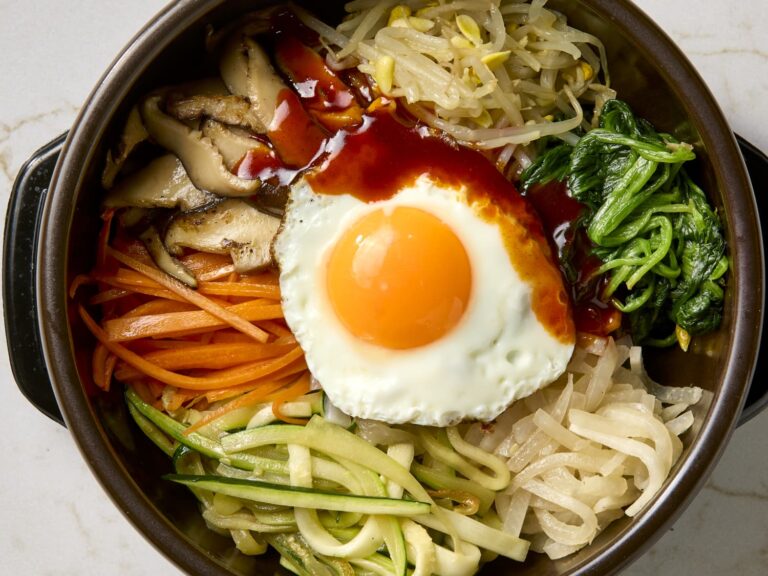Bibimbap, meaning “mixed rice” in Korean, is one of the most iconic dishes in Korean cuisine. Known for its vibrant presentation and harmonious flavors, bibimbap is more than just a meal—it’s a cultural symbol.
Originating from Korean royal cuisine, bibimbap was initially served as a ceremonial dish during ancestral rites. Over the centuries, it evolved into a versatile comfort food that can be tailored to any palate. Traditionally, bibimbap is served with white rice topped with an array of colorful vegetables, marinated meat, and a fried egg, all brought together with a generous dollop of spicy gochujang (fermented chili paste).
Why Bibimbap Stands Out
- A Feast for the Eyes: The vibrant mix of ingredients creates a dish that’s as visually appealing as it is delicious.
- Customizable: Whether you’re vegetarian or a meat-lover, you can adapt bibimbap to your preferences.
- Nutritious and Balanced: With proteins, carbs, and veggies, it’s a complete meal in one bowl.
Today, bibimbap is enjoyed worldwide, with variations like dolsot bibimbap (served in a hot stone bowl) gaining popularity. It’s not just a dish—it’s an experience, bringing the essence of Korean culture to your table.


